51 have author last names that start with F have author last names that start with F
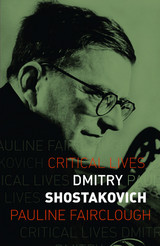
Pauline Fairclough’s absorbing new biography offers a vivid portrait of Shostakovich. Featuring quotations from previously unpublished letters as well as rarely seen photographs, Fairclough’s book provides fresh insight into the music and life of a composer whose legacy, above all, was to have written some of the greatest and most cherished music of the last century.
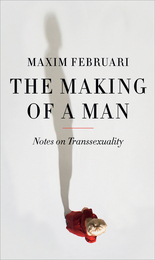
Februari contemplates the many questions that sexual transitions entail: the clinical effects of testosterone, the alteration of sexual organs, and its effects on sexual intimacy; how transsexuality figures in the law; and how it challenges the way we talk about sex and gender, such as the seemingly minor—but crucially important—difference between the terms “transsexual” and “transgender.” He analyzes our impressions of effeminate men and butch women, separating apparent acceptance from actual prejudice, and critically examines the curious requirement in many countries that one must demonstrate a psychological disturbance—a “gender identity disorder”—in order to be granted sex change therapies. From there he explores the seemingly endless minutiae changing genders or sex effect, from the little box with an M or an F on passports to the shockingly sudden way testosterone can adjust physical features.
With his characteristically clear voice combined with intimate—sometimes moving, sometimes funny—ruminations, Februari wakes readers up to all the ways, big and small, our world is structured by sex and gender.

Touching on all of these classic aspects of the Arthur tale, Christopher R. Fee seeks to understand Arthur in terms of comparative mythology as he explores how the Once and Future King remains relevant in our contemporary world. From ancient legend to Monty Python, Arthur: God and Hero in Avalon discusses everything from the very earliest versions of the King Arthur myth to the most recent film and television adaptations, offering insight into why Arthur remains so popular—a hero whose story still speaks so eloquently to universal human needs and anxieties.

In this natural and cultural history of the polar bear, Margery Fee explores the evolution, species, habitat, and behavior of the animal, as well as its portrayal in art, literature, film, and advertising. Illustrated throughout, Polar Bear will beguile anyone who loves these outsize, beautiful, seemingly cuddly, yet deadly carnivores.

Alfred Jarry’s (1873–1907) creation of the monster-tyrant Ubu in his play Ubu Roi was a watershed in theater history and brought him instant notoriety following its Paris premiere in 1896. In this concise, critical biography, Jill Fell explores this and the many achievements that this multi-talented and influential writer and playwright crammed into his short life.
Drawing on numerous anecdotes and the early publications of the Collège de ’Pataphysique, Fell traces Jarry’s growth and influence, as he rapidly established his literary reputation as a prose writer, journalist, art critic, and playwright. Along the way, Fell explores his interaction with a wide cast of avant-garde characters, including Gauguin, Rachilde, Wilde, Beardsley, and Apollinaire. The quarrels that punctuated Jarry’s life—and the extravagance and the drinking that drained his meager wealth—form the background to this portrait of an obsessive writer, committed to his craft and undeterred by his worsening domestic circumstances.
Inthis entertaining biography, Jarry’s spirit and his inventions clearly emerge as an inspiration to the great figures of experimental twentieth-century theatre, art, and literature. Alfred Jarry will inform and delight readers who wish to learn more about this fascinating, unconventional figure.

Beginning with the early American settlers and the two contrasting visions they set out—one competitive, the other cooperative—Fender traces the development of the latter through a series of dramatic addresses. He examines the inaugural speeches of early presidents such as John Adams and Thomas Jefferson, moving to Abraham Lincoln’s arguments—at once logical and passionate—for maintaining the Union, and then on to the twentieth century’s great orators, such as John F. Kennedy and Martin Luther King Jr. He also looks at the notion of the “great American speech” in popular culture, exploring both the usual places—such as movie courtroom scenes—where it pops up, as well as its unexpected ubiquity in adventure films, thrillers, or any story where equality and justice come under threat.
Through his exploration of great speeches, Fender paints the picture of two simultaneous and free-standing visions of American identity, offering a sophisticated look at American ideological history.

Sixteenth-century Spain was small, poor, disunited, and sparsely populated. Yet the Spaniards and their allies built the largest empire the world had ever seen. How did they achieve this? Felipe Fernández-Armesto and Manuel Lucena Giraldo argue that Spain’s engineers were critical to this venture. The Spanish invested in infrastructure to the advantage of local power brokers, enhancing the abilities of incumbent elites to grow wealthy on trade, and widening the arc of Spanish influence. Bringing to life stories of engineers, prospectors, soldiers, and priests, the authors paint a vivid portrait of Spanish America in the age of conquest. This is a dazzling new history of the Spanish Empire, and a new understanding of empire itself, as a venture marked as much by collaboration as oppression.
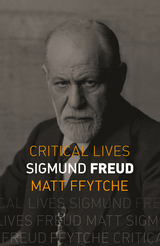
However much his work has been reviled or contested, Sigmund Freud remains one of the most significant thinkers of the last one hundred and fifty years. He founded psychoanalysis, and his vision of human behavior and the unconscious mind provided a compelling paradigm for the understanding of society for much of the twentieth century.
In this gripping new account, Matt ffytche draws on the latest research into Freud’s impact and historical context, making the case for his continuing relevance in analyzing the vagaries, resistances, and desires of the human mind. Engaging and accessible, Sigmund Freud appeals to both students and the general reader, as well as anyone fascinated with mental health, dreams, and the hidden depths of human experience.
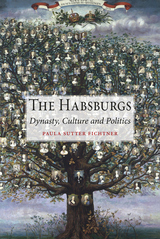
Tracing the origins of the house of Habsburg to the tenth century, Fichtner identifies the principal characters in the story and explores how they were able to hold together such a culturally diverse and multiethnic state for so many centuries. She takes account of the intertwining of culture, politics, and society, revealing the strategies that enabled the dynasty’s extraordinarily long life: its dazzling mix of cultural propaganda, public performances, and cunning political maneuvering. She points out the irony that one of the crowd-pleasing performances that had enabled the Habsburg success—visiting beds of the injured—led to Ferdinand’s death and the empire’s downfall. Breathing fresh life into the history of the Habsburg reign, this accessible and authoritative history charts one of the pivotal foundation stories of modern Europe.
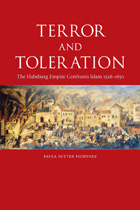
In the fourteenth century, Ottoman armies swept westward across the Danube Valley before confronting the Habsburgs, who ruled central and eastern Europe, and in Terror and Toleration, Fichtner charts the religious and political conflicts that fueled 300 years of war. She reveals how ruling powers in Vienna and the church spread propaganda about Muslims that still lingers today. But the Habsburgs dramatically reversed their attitudes toward Muslims in the seventeenth century, and through this story, Fichtner explains how one can recognize an enemy while adjusting one’s views about them.
A fascinating read, Terror and Toleration sheds new light on the deep roots of the often contentious relationship between Islam and the West.
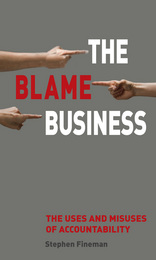
Fineman focuses on blame’s roots and enduring manifestations, from the witch hunts of the past to today’s more buttoned-up scapegoating and stigmatization; from an individual’s righteous anger to entire cultures shaped by its power. Addressing our era of increasing unease about governance in public and private enterprises, he delves behind the scenes of organizations infected with blame, profiling the people who keep its plates spinning. With a critical eye, he examines the vexing issue of public accountability and the political circus that so often characterizes our politicians and corporations lost in their “blame games.”
Ultimately, Fineman raises the challenging question of how we might mitigate blame’s corrosive effects, asking crucial and timely questions about the limits of remorse and forgiveness, the role of state apologies for historical wrongdoings, whether restorative justice can work, and many other topics. An absorbing look at something we all know intimately, this book deepens our understanding of blame and how it shapes our lives.
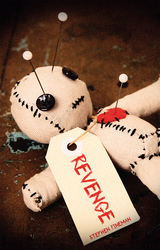
In this bold new book, Stephen Fineman lifts the lid on revenge, exposing its intriguing contours in arenas as diverse as the workplace, intimate relationships, the search for societal justice, war, and politics. He explores the psychology and experience of revenge and touches on more recent manifestations, like cyber-stalking and revenge pornography, in order to ask important questions: How best can we prevent the most damaging effects of revenge? When should retribution be tolerated, or even celebrated? If we are all potential avengers, what does that say about us?
In an age when digital media has created a new generation of armchair avengers, settling real or imaginary scores and starting-up new ones, Revenge is more than timely. Thoughtful and critical, Revenge tackles one of society’s oldest and greatest vices.

Anton Chekhov’s stories and plays endure, far beyond the Russian context, as outstanding modern literary models. In a brief, remarkable life, Chekhov rose from lower-class, provincial roots to become a physician, leading writer, and philanthropist, all in the face of a progressive fatal disease. In this new biography, Michael C. Finke analyzes Chekhov’s major stories, plays, and nonfiction in the context of his life, both fleshing out the key features of Chekhov’s poetics of prose and drama and revealing key continuities across genres, as well as between his lesser-studied early writings and the later works. An excellent resource for readers new to Chekhov, this book also presents much original scholarship and is an accessible, comprehensive overview of one of the greatest modern dramatists and writers of short fiction in history.
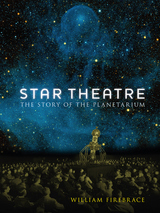
Star Theatre explores the history of the planetarium’s mix of science and spectacle. William Firebrace reveals how in the planetarium, the solar system and universe is demonstrated on an ever-expanding scale. He traces the origins of the building through history, from its antecedents to its invention in Germany in the 1920s, developments in the USSR and the United States, to its expansion across the globe at the time of the space race, and finally to the evolution of the contemporary planetarium in a time of startling astronomical and cosmological discoveries. This concise and well-illustrated history will appeal to astronomy lovers and those interested in architecture, theater, and cinema.

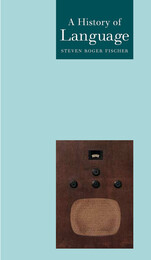
"[a] delightful and unexpectedly accessible book ... a virtuoso tour of the linguistic world."—The Economist
"... few who read this remarkable study will regard language in quite the same way again."—The Good Book Guide

With the Middle Ages in Europe and the Middle East, innovative re-inventions of reading emerged – silent and liturgical reading; the custom of lectors; reading’s focus in general education – whereupon printing transformed society’s entire attitude to reading. Fischer charts the explosion of the book trade in this era, its increased audience and radically changed subject-matter; describes the emergence of broadsheets, newspapers and public readings; and traces the effect of new font designs on general legibility.
Fischer discusses society’s dedication to public literacy in the sweeping educational reforms of the eighteenth and nineteenth centuries, and notes the appearance of free libraries, gender differences in reading matter, public advertising and the "forbidden" lists of Church, State and the unemancipated. Finally, he assesses the future, in which it is likely that read communication will soon exceed oral communication through the use of the personal computer and the internet, and looks at "visual language" and modern theories of how reading is processed in the human brain. Asking how the New Reader can reshape reading’s future, he suggests a radical new definition of what reading could be.

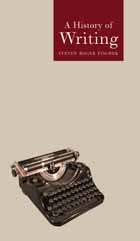
Commencing with the first stages of information storage, Fischer focuses on the emergence of complete writing systems in Mesopotamia in the fourth millennium BC. He documents the rise of Phoenician and its effect on the Greek alphabet, generating the many alphabetic scripts of the West. Chinese, Vietnamese, Korean and Japanese writing systems are dealt with in depth, as is writing in pre-Columbian America. Also explored are Western Europe's medieval manuscripts and the history of printing, leading to the innovations in technology and spelling rules of the 19th and 20th centuries.

A small canoe with Polynesians brought the first humans to Easter Island in 700 CE, and when boat travel in the South Pacific drastically decreased around 1500, the Easter Islanders were forced to adapt in order to survive their isolation. Adaptation, Fischer asserts, was a continuous thread in the life of Easter Island: the first European visitors, who viewed the awe-inspiring monolithic busts in 1722, set off hundreds of years of violent warfare, trade, and disease—from the smallpox, wars, and Great Death that decimated the island to the late nineteenth-century Catholic missionaries who tried to "save" it to a despotic Frenchman who declared sole claim of the island and was soon killed by the remaining 111 islanders. The rituals, leaders, and religions of the Easter Islanders evolved with all of these events, and Fischer is just as attentive to the island's cultural developments as he is to its foreign invasions.
Bringing his history into the modern era, Fischer examines the colonization and annexation of Easter Island by Chile, including the Rapanui people's push for civil rights in 1964 and 1965, by which they gained full citizenship and freedom of movement on the island. As travel to and interest in the island rapidly expand, Island at the End of the World is an essential history of this mysterious site.


Are they frivolous or practical? Follies are buildings constructed primarily for decoration, but they suggest another purpose through their appearance. In this visually stunning book, Celia Fisher describes follies in their historical and architectural context, looks at their social and political significance, and highlights their relevance today. She explores follies built in protest, follies in Oriental and Gothic styles, animal-related follies, waterside follies and grottoes, and, finally, follies in glass and steel. Featuring many fine illustrations, from historical paintings to contemporary photographs and prints, and taking in follies from Great Britain to Ireland, throughout Europe, and beyond, The Story of Follies is an amusing and informative guide to fanciful, charming buildings.

Fisher looks at how tulips’ intensely saturated color has made them an important species for botanists and gardeners. Initially rare in sixteenth century Netherlands, tulips sparked such frenzy among aristocratic collectors that they caused the first economic bubble and collapse. Exploring the ways cultivators have created one hybrid after another—in an astonishing range of colors and shapes—Fisher also shows how tulips have inspired art and literature throughout the centuries, from Ottoman Turkey to the paintings of the Dutch Masters, from Alexandre Dumas’s novel The Black Tulip to contemporary artist David Cheung painting them atop pages of the Financial Times. Stunningly illustrated, this book offers a unique cultural history of one of our most important flowers.
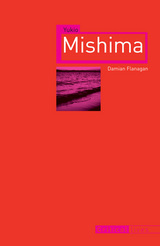
Flanagan argues that Mishima was a man obsessed with the concepts of time and “emperor,” and reveals how these were at the heart of his literature and life. Untangling the distortions in the writer’s memoirs, Flanagan traces the evolution of Mishima’s attempts to master and transform his sexuality and artistic persona. While often perceived as a solitary protest figure, Mishima, Flanagan shows, was very much in tune with postwar culture—he took up bodybuilding and became a model and actor in the 1950s, adopted the themes of contemporary political scandals in his work, courted English translators, and became influenced by the student protests and hippie subculture of the late 1960s. A groundbreaking reevaluation of the author, this succinct biography paints a revealing portrait of Mishima’s life and work.

For over six centuries, Chaucer has epitomized poetic greatness, though more recent treatments of The Canterbury Tales’ lively and often risqué style have made his name more synonymous with bawdy humor. But beyond his poetic achievements, Chaucer assumed various roles including those of royal attendant, soldier, customs official, justice of the peace, and more. In this book, Mary Flannery chronicles Chaucer’s life during one of the most turbulent periods of English history, illuminating how he came to be known not only as the father of English poetry but also as England’s “merry bard.”
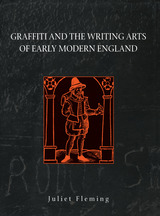
Tattoos and graffiti immediately bring to mind contemporary urban life and its inhabitants. But in fact, both practices date back much further than is generally thought—even by scholars. Drawing on a previously unavailable archive, Juliet Fleming reveals the unknown and disregarded literary arts of sixteenth century England.
In Graffiti and the Writing Arts of Early Modern England, Fleming argues that our modern assumptions of what constitutes written expression have limited our access to and understanding of early modern history and writing. Fleming combines detailed historical scholarship with intellectual daring in a work that describes how writing practices have not been limited to the boundaries of the page; instead they have included body surfaces, ceramics, ceilings, walls, and windows.
Moving beyond what has been preserved in print and manuscript, this book claims the whitewashed wall as the primary textual canvas of the early modern English, explores the tattooing practices of sixteenth-century Europeans, and uncovers the poetics of ceramic cookware. Graffiti and the Writing Arts of Early Modern England will provide a startling new perspective for scholars of early modern literature and cultural history.
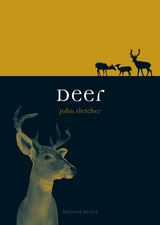
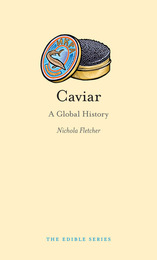
Served up with a mother of pearl spoon and alongside a crystal flute of champagne, caviar is the ultimate culinary symbol of wealth, luxury, and decadence. But how did tiny fish eggs—which many might regard as an unwanted, throwaway food—become such an international delicacy? In Caviar: A Global History, renowned food writer Nichola Fletcher answers this curious question, examining the rise of caviar as an indulgence and its effect on the lives of the people who seek and sell it today.
Fletcher takes the reader on a tour of the main areas of caviar production—Russia, Iran, Europe, and America—and investigates how the industry has contributed to the decline of the sturgeon population, the fish most associated with caviar. As Fletcher details, many efforts are underway to create sustainable sturgeon farming, which would make it possible to enjoy caviar with a clear, environmental conscience.
Featuring vibrant illustrations and many fascinating anecdotes, Caviar also offers advice on purchasing and serving caviar. This is the perfect food book for everyone in need of a little opulence and glamour.
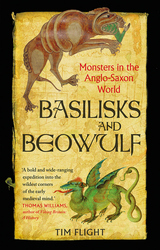
This book addresses a simple question: why were the Anglo-Saxons obsessed with monsters, many of which did not exist? Drawing on literature and art, theology, and a wealth of firsthand evidence, Basilisks and Beowulf reveals a people huddled at the edge of the known map, using the fantastic and the grotesque as a way of understanding the world around them and their place within it. For the Anglo-Saxons, monsters helped to distinguish the sacred and the profane; they carried God’s message to mankind, exposing His divine hand in creation itself. At the same time, monsters were agents of disorder, seeking to kill people, conquer their lands, and even challenge what it meant to be human. Learning about where monsters lived and how they behaved allowed the Anglo-Saxons to situate themselves in the world, as well as to apprehend something of the divine plan. It is for these reasons that monsters were at the very center of their worldview. From map monsters to demons, dragons to Leviathan, we neglect these beasts at our peril.

Pavel Florensky was a true polymath: trained in mathematics and philosophy at Moscow University, he rejected a scholarship in advanced mathematics in order to study theology at the Moscow Theological Academy. He was also an expert linguist, scientist and art historian. A victim of the Soviet government’s animosity towards religion, he was condemned to a Siberian labor camp in 1933 where he continued his work under increasingly difficult circumstances. He was executed in 1937.
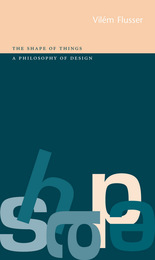

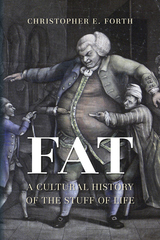
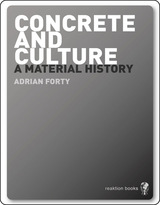
Concrete has been used in arches, vaults, and domes dating as far back as the Roman Empire. Today, it is everywhere—in our roads, bridges, sidewalks, walls, and architecture. For each person on the planet, nearly three tons of concrete are produced every year. Used almost universally in modern construction, concrete has become a polarizing material that provokes intense loathing in some and fervent passion in others.
Focusing on concrete’s effects on culture rather than its technical properties, Concrete and Culture examines the ways concrete has changed our understanding of nature, of time, and even of material. Adrian Forty concentrates not only on architects’ responses to concrete, but also takes into account the role concrete has played in politics, literature, cinema, labor-relations, and arguments about sustainability. Covering Europe, North and South America, and the Far East, Forty examines the degree that concrete has been responsible for modernist uniformity and the debates engendered by it. The first book to reflect on the global consequences of concrete, Concrete and Culture offers a new way to look at our environment over the past century.

“Yo ho ho and a bottle of rum!” A favorite of pirates, the molasses-colored liquid brings to mind clear blue seas, weather-beaten sailors, and port cities filled with bar wenches. But enjoyment of rum spread far beyond the scallywags of the Caribbean—Charles Dickens savored it in punch, Thomas Jefferson mixed it into omelets, Queen Victoria sipped it in navy grog, and the Kamehameha Kings of Hawaii drank it straight up. In Rum,Richard Foss tells the colorful, secret history of a spirit that not only helped spark the American Revolution but was even used as currency in Australia.
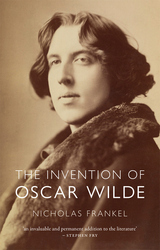
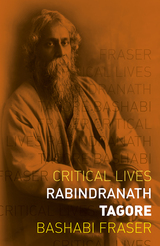
In this timely reappraisal of Tagore’s life and work, Bashabi Fraser assesses Tagore’s many activities and shows how he embodies the modern consciousness of India. She examines his upbringing in Bengal, his role in Indian politics, and his interests in international relationships. Taking a holistic perspective, she also addresses some of the misreadings of his extraordinary life and work.

In Photography and Japan, Karen Fraser argues that the diversity of styles, subjects, and functions of Japanese photography precludes easy categorization along nationalized lines. Instead, she shows that the development of photography within Japan is best understood by examining its close relationship with the country’s dramatic cultural, political, and social history.
Photography and Japan covers 150 years of photography, a period in which Japan has experienced some of the most significant events in modern history and made a remarkable transformation from an isolated, feudal country into an industrialized, modern world power—a transformation that included a striking rise and fall as an imperial power during the first half of the twentieth century and a miraculous economic recovery in the decades following the devastation of World War II. The history of photography has paralleled these events, becoming inextricably linked with notions of modernity and cultural change.
Through thematic chapters that focus on photography’s role in negotiating cultural identity, war, and the documentation of urban life, Photography and Japan introduces many images that will be unfamiliar to Western viewers and provides a broadened context for those photos that are better known.
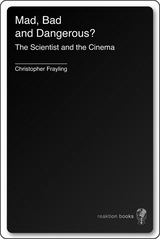
Christopher Frayling traces the genealogy of the scientist in film, showing how the scientist has often embodied the predominant anxieties of a particular historical moment. The fear of nuclear holocaust in the 1950s gave rise to a rash of radioactive-mutant horror movies, while the possible dangers of cloning and biotechnology in the 1990s manifested themselves in Jurassic Park. During these eras, the scientist's actions have been viewed through a lens of fascination and fear. In the past few decades, with increased public awareness of environmental issues and of the impact of technology on nature, the scientist has been transformed once again—into a villainous agent of money-hungry corporate powers. Mad, Bad and Dangerous? also examines biographical depictions of actual scientists, illuminating how they are often portrayed as social misfits willing to sacrifice everything to the interests of science.
Drawing on such classic and familiar films as Frankenstein, Metropolis, and The Wizard of Oz, Frayling brings social and film history together to paint a much larger picture of the evolving value of science and technology to society. A fascinating study of American culture and film, Mad, Bad and Dangerous? resurrects the scientists of late night movies and drive-in theaters and gives them new life as cultural talismans.
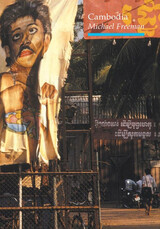
In Cambodia, writer and photographer Michael Freeman examines the country’s present troubled situation in the light of its political and cultural history, looking at many aspects of modern Cambodia, including the psychological effect of the outrages of Pol Pot, and how Angkor Wat has become an icon and symbol for its tourist and heritage industry. In the process he relates personal stories and anecdotes from Cambodia’s recent and more ancient history, such as royal white elephants and buffalo sacrifices in villages; how spiders are cooked and eaten; and the incidence of cannibalism in Cambodian warfare. Cambodia is sometimes shocking, often humorous, and always entertaining, and will give the reader a new insight into the history of this maltreated yet fascinating country.
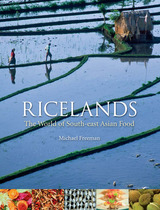
Ricelands takes the reader on a colorful and engaging tour of these popular tourist destinations through the richly layered cultures surrounding the various food traditions. Traveling across the landscapes of Thailand, Vietnam, Burma, Cambodia, Malaysia, Laos, Indonesia, and the Philippines, Freeman explores the origins of their respective cuisines, the defining characteristics of authentic dishes, and the evolution of the cuisines as they entered foreign cultures. From birds’ nests gathered in Thailand’s coastal caves to the less familiar dishes of Burma and Cambodia to the pungent durian fruit (and Westerners’ often aghast reactions), the author unearths unexpected treasures and tantalizing facts about Southeast Asia and its social history. The book also examines the cooking techniques, complex spices, and agricultural economies that underpin the countries’ food cultures, and considers how the informal nature of Southeast Asian eating fits into the rhythms of modern-day living.
Vibrantly illustrated and elegantly conceived, Ricelands takes us into the heart of tropical Asia and the delicious foods that define it the world over.
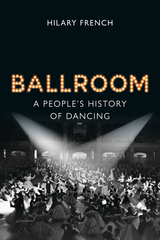
In the early twentieth century, American ragtime and the Parisian Tango fueled a dancing craze in Britain. Public ballrooms—which had never been seen before—were built throughout the country, providing a glamorous setting for all classes to dance. The new styles of dance being defined and taught in the 1920s, as well as the films of Fred Astaire and Ginger Rogers in the 1930s, ensured that ballroom dancing continued to be the most popular pastime until the 1960s, rivaled only by the cinema.
This book explores the vibrant history of Ballroom and Latin: the dances, the lavish venues, competitions, and influential instructors. It also traces the decline of competitive dancing and its resurgence in recent years with the hugely popular TV shows Strictly Come Dancing and Dancing with the Stars.

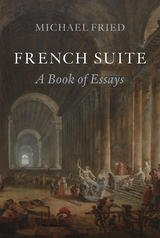
French Suite examines a range of important French painters and two writers, Baudelaire and Flaubert, from the brothers Le Nain in the mid-seventeenth century to Manet, Degas, and the Impressionists in the later nineteenth century. A principal theme of Michael Fried’s essays is a fundamental concern of his throughout his career: the relationship between painting and the beholder. Fried’s typically vivid and strongly argued essays offer many new readings and unexpected insights, examining both familiar and lesser-known French artistic and literary works.
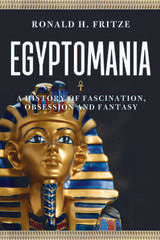
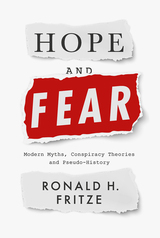
Is a secret and corrupt Illuminati conspiring to control world affairs and bring about a New World Order? Was Donald Trump a victim of massive voter fraud? Is Elizabeth II a shapeshifting reptilian alien? Who is doing all this plotting?
In Hope and Fear, Ronald H. Fritze explores the fringe ideas and conspiracy theories people have turned to in order to make sense of the world around them, from myths about the Knights Templar and the Ten Lost Tribes of Israel, to Nazis and the occult, the Protocols of Zion and UFOs. As Fritze reveals, when conspiracy theories, myths, and pseudo-history dominate a society’s thinking, facts, reality, and truth fall by the wayside.

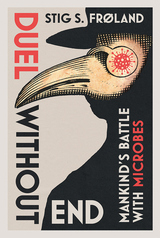
In this panoramic and up-to-date account, we learn how the Black Death, smallpox, the 1918 influenza pandemic, and other great epidemics have not only led to enormous suffering and mass death but have also contributed to the fall of empires and changed the course of history. We also discover how new infectious diseases such as HIV/AIDS and COVID-19 emerge—and how we wage war against them.
Humanity has struck back at the microbes: antibiotics and new vaccines have saved millions of lives. But the battle with these relentless, silent enemies is far from won. We face increasing threats from new and unavoidable pandemics, antibiotic resistance, and even potential extraterrestrial microbes. Duel Without End is a fascinating journey through the long history of infection, from the dawn of life to humanity’s future exploration of deep space.

Animal is a timely overview of the many ways in which we live with animals, and assesses many of the paradoxes of our relationships with them: for example, why is the pet that sits by the dinner table never for eating? Examining novels such as Charlotte’s Web, films such as Old Yeller and Babe, science and advertising, fashion and philosophy, Animal also evaluates the ways in which we think about animals and challenges a number of the assumptions we hold. Why is it, for example, that animals are such a constant presence in children’s literature? And what does it mean to wear fake fur? Is fake fur an ethical avoidance of animal suffering, or merely a sanitized version of the unacceptable use of animals as clothing?
Neither evangelical nor proselytizing, Animal invites the reader to think beyond the boundaries of a subject that has a direct effect on our day-to-day lives.
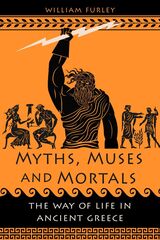
Myths, Muses and Mortals gives new insight into a multitude of life experiences in ancient Greece. The book introduces the lives of the ancient Greeks through extracts taken from a range of sources, including poems, plays, novels, histories, lawsuits, inscriptions, and private note tablets. The voices speak for themselves in fresh translation, but in addition, William Furley gives the narratives historical context and illuminates the literary genre in which they appear. The texts are grouped around important areas of life—love relations, travel and trade, social status, divine signs, daily events, warfare, philosophies, dress code, and private and public celebration—giving voice to the variety of lives experienced by the citizens of ancient Greece and an insight into the Greek mind.

READERS
Browse our collection.
PUBLISHERS
See BiblioVault's publisher services.
STUDENT SERVICES
Files for college accessibility offices.
UChicago Accessibility Resources
home | accessibility | search | about | contact us
BiblioVault ® 2001 - 2024
The University of Chicago Press









